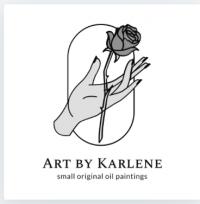So what is copyright? And why is it important to me?
One NY city gallery wrote about this back in 2017 For the art world, the internet is a lot like the American frontier: full of opportunity and promise – but also a place to be wary. Today, with just a few clicks, you can share your art with a worldwide audience, meet and acquire new collectors and…
One NY city gallery wrote about this back in 2017
For the art world, the internet is a lot like the American frontier: full of opportunity and promise – but also a place to be wary. Today, with just a few clicks, you can share your art with a worldwide audience, meet and acquire new collectors and fans, raise money for your art projects, and make life-long friends. However, along with this convenience comes a whole new wave of dangers and drawbacks, sometimes leaving artists exposed and vulnerable.
For many artists out there, the largest looming nightmare is copyright infringement. Art is your craft and your livelihood, and it is a personal investment of your time, money, effort, and soul. Moreover, it is your intellectual property. Protecting your art needs to be a priority. There are a number of ways to help you do this, and we’ve laid them out for you in a quick, simple guide
In layman’s terms, intellectual property is your right to protect your original work while a copyright is established when an original work is created tangibly (not just conceptually). However, unregistered work can often be hard to prove as your own, which is why it is important to keep digital or physical records. If you ever need to take a case to court, think about how well you can demonstrate that you are the creator of the artwork in question.
This is the first step in protecting your art against copyright violation. Adapt the habit of signing all your works, preferably with the year of completion. You must always sign your artwork once it is finished. You could do it discreetly in a corner, or make you signature a part of the artwork. You can also sign the back of the artwork.You must always sign your artwork once it is finished. You could do it discreetly in a corner, or make you signature a part of the artwork. You can also sign the back of the artwork.
Register your work
If you are a well known artist this can be done online with the US Copyright Office of the U.S. Library of Congress. You fill out forms and pay a fee and it takes some time.
Keep Digital Records Of Your Work
A picture is worth a thousand words. Having a digital library of your artwork will save you a lot of hassle in the event of copyright infringement, as you can present this record in court. The great thing about photographs is that their metadata often stores the date that the pictures were taken. A professional photographer can also be used to ensure that two people have evidence to support any copyright infringement cases.

